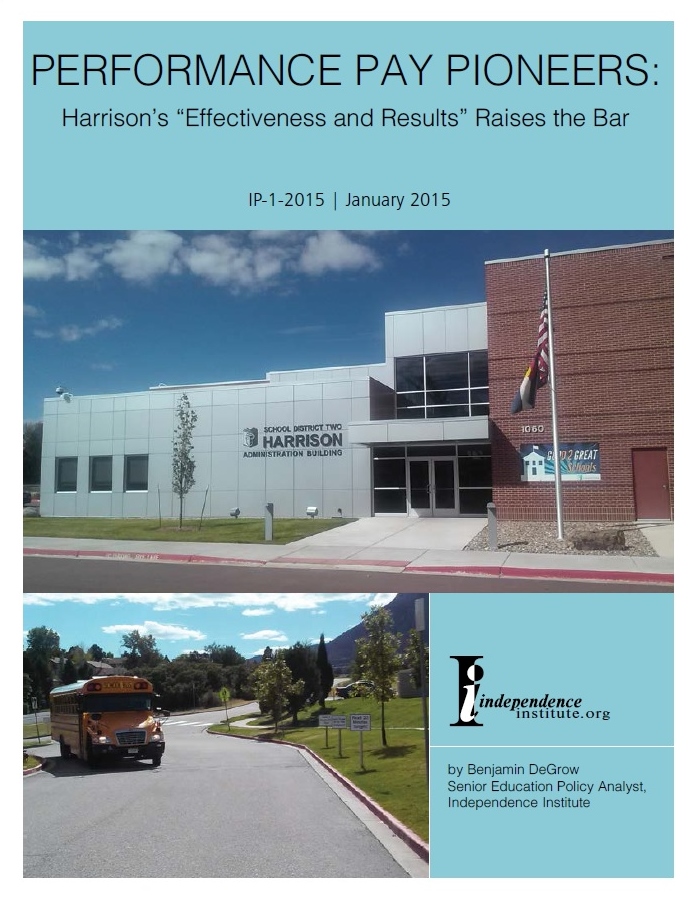Author: Ben DeGrow
Executive Summary
Colorado’s 2010 educator effectiveness reform has improved the K-12 public school system’s capability to distinguish the quality of instruction. One school district has gone further than any other in taking the next logical step: differentiating teacher pay based on effectiveness. Harrison School District 2 in Colorado Springs has pioneered a rigorous and sustainable system of performance-based compensation. Seniority and academic credentials no longer factor into teacher salaries. The approach aligns well with the research on the ineffectiveness of traditional pay systems.
Launched in 2010, Harrison’s Effectiveness and Results (E&R) program grew out of former superintendent Mike Miles’ intense focus on boosting achievement among a challenging student population. The district is comprised of about 70 percent low-income and 70 percent minority students. Establishing and maintaining a system of true performance pay has relied on strong leadership, aided by the lack of a formal union contract, and an organizational culture driven by high expectations.
The guiding principles of E&R balance rigor and a firm belief in individual teacher accountability for student results with the need to ensure fairness and accuracy. The approach has gained deep traction by building a meaningful tool and purposeful process of observing and evaluating teacher performance on the job. Equally as important is the district’s thorough and careful use of student achievement data. It logically follows that a teacher’s effectiveness is evenly determined by regular performance evaluations on one hand and multiple measures of student academic achievement on the other.
Harrison teachers move up the nine levels of E&R—earning anywhere from $35,000 to $90,000 a year—strictly by making the mark both in professional performance and student achievement. At the lower half of the scale, teachers have clear opportunity to increase their earnings more quickly than their counterparts in traditional pay systems. Completing the Distinguished Teacher Evaluation process and reaching the top end of the pay scale is a more challenging endeavor.
District principals, who also are paid according to a performance-based model, express overwhelming support for the system. To a lesser extent, majorities of teachers are also favorable to E&R. Evidence points to widespread changes in instructional practices, particularly related to data usage and lesson preparation. But the relative inexperience of Harrison’s teaching workforce and the moderate rate of teacher turnover persist.
No rigorous formal research has been done to show E&R results in greater student success, but the following key indicators strongly suggest the need to study a potential connection:
- The district climbed steadily from academic watch status in 2006 to a strong accreditation rating in 2013.
- Overall TCAP and district assessment scores rose steadily between 2009 and 2013.
- The district’s average ACT test score rose from 16.8 in 2010 to 19.0 in 2014.
- Within four years, the on-time graduation rate went from lagging the state average by 10 points to topping the state.
E&R started as a five-year test drive with a failsafe option that would allow the district to return to a traditional pay structure. But district leaders consistently express a strong commitment to continuing the program into the foreseeable future. Harrison has pioneered a less difficult, albeit still challenging, path for other districts to adopt true performance pay. Political will and leadership are needed to duplicate this approach elsewhere. The more Harrison can demonstrate the source of its success, the easier that decision will be.








